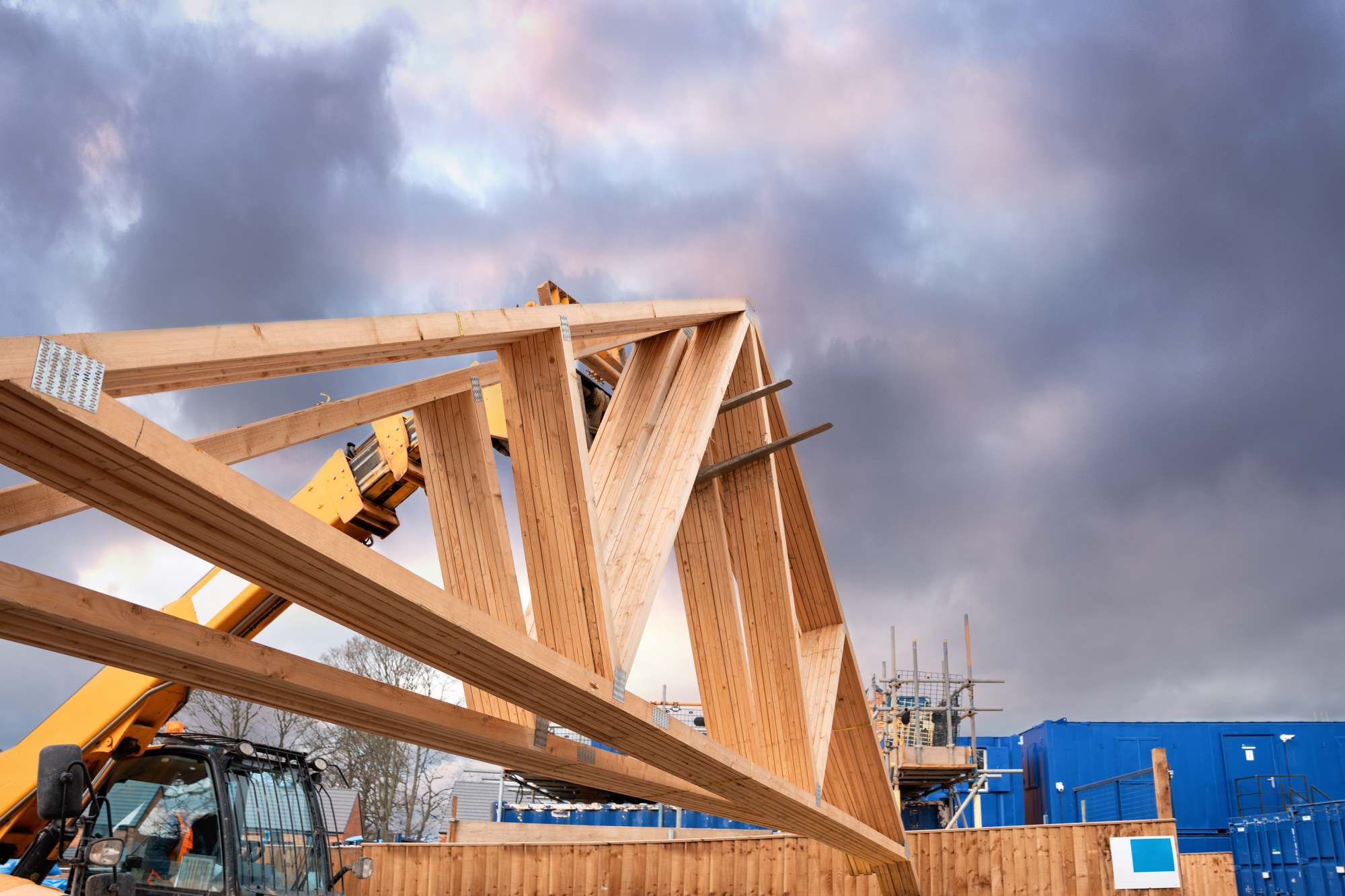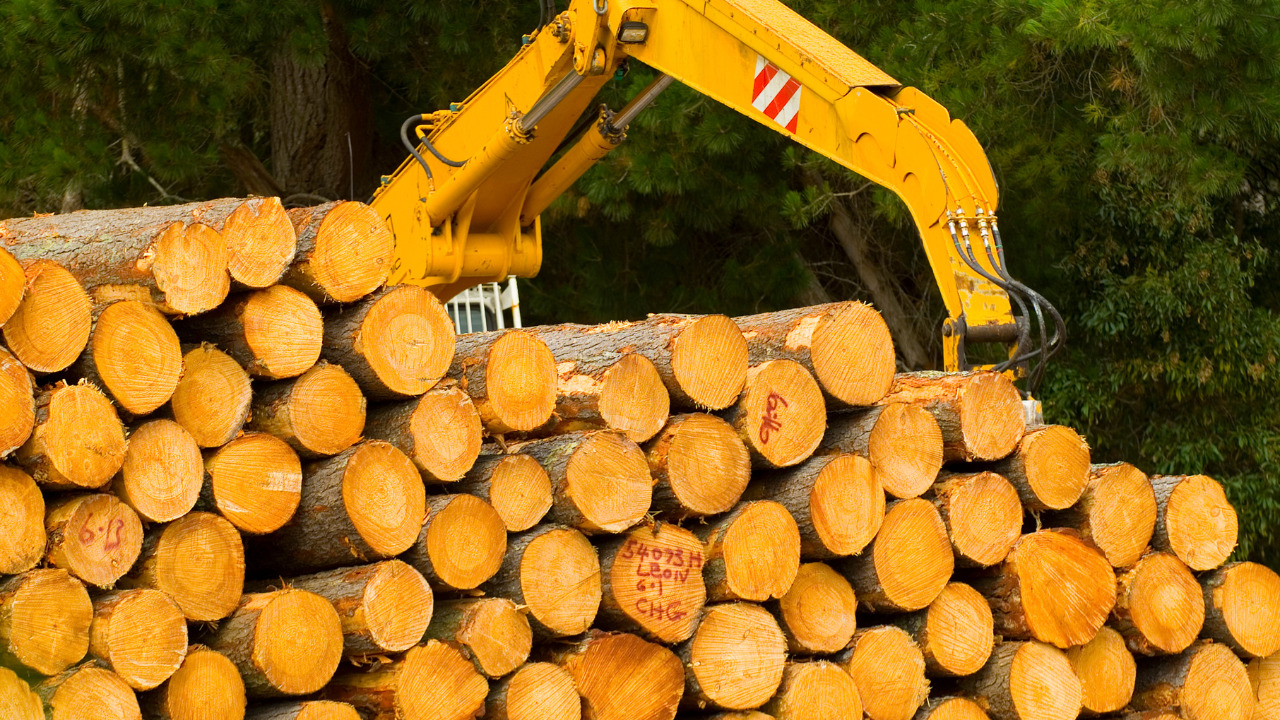If you’re buying wood for construction, you must take care around materials handling machinery. A business selling lumber or dressed timber from a yard is most likely using a forklift and perhaps a front-end loader or telehandler – three types of materials handling machines with blind spots and inherent instability that carry heavy and awkward loads.
Loads of timber tend to be long – as much as 6 metres – and a packet of kiln-dried shrink-wrapped timber can weigh more than 500kg. If it’s not kiln-dried, some packets will be in excess of a tonne, which is a significant danger if it falls.

Sideloader forklift with a load of long planks
The length of the loads throws up some logistical and safety considerations for the machine operators in the yard, and people visiting the yard to buy the product. Some loads have items that will roll (e.g. poles).

A loader picks up a log using pallet forks and a log grab.
Each piece of equipment needs the operator to be inducted and trained so that they understand best practice operation and safety measures. Even though all these machines may be fitted with forks, telehandler training, forklift training and front-end loader training require different disciplines to be taught:
- a telehandler has an extendable boom and functions more like a crane
- a forklift has a vertical mast, and is the most common machine
- a front-end loader has arms that raise the forks, but otherwise functions like an articulated agricultural tractor.
Table of Contents
Blind spots
A forklift operator has blind spots caused by the mast uprights. People can even be obscured by the masts on a small forklift capable of lifting only 2000kg.
A telehandler operator has blind spots caused by the boom being on the right-hand side of the cab. Plus, the cab rollover protection pillars can hide pedestrians.

Telehandler with fork attachments lifts timber fillets. Note that the boom on the right of the cab blocks the operator’s view
A front-end loader operator has the rollover protection pillars plus there’s often a large counterweight behind the cab which obscures people standing behind the machine.
If you are walking around a yard, make sure the operator has seen you. You can shout out or use hand signals to attract the operator’s attention.
Signage
Look out for signage in the yard that tells you what you’re allowed to do. There may be areas you cannot go, or you might be required to be with a company representative rather than just walking around.
High-vis clothing
In some countries, high-vis clothing is not commonly used, but it’s useful if you’re visiting a timber supplier if you have your own one in your vehicle so that you can be more visible to machine operators in the yard. It might be mandatory if you’re in the yard, in which case there should be signage.
Danger radius
If a pedestrian approaches the machine, there should be a mandatory exclusion zone. This is a radius around the machine which a pedestrian is not allowed to enter unless the machine is stopped with the load stable and preferably lowered, the transmission in neutral and the handbrake on.
The exclusion zone should respect the potential radius of danger around the machine. If a forklift can lift five metres high and it tips over, the top of the mast will land five metres from the starting position of the forklift. If it’s carrying a six-metre packet of timber, or some rough-sawn logs, then the exclusion zone may need to be larger.
For practical purposes, exclusion zones tend to be set a 2, 3 or 5 metres, depending on where the machine is operating.
A front-end loader is unlikely to tip sideways, but could tip forwards, whereas a telehandler and forklift can easily tip forwards or sideways.

A telehandler lifts pre-made roof trusses – a load with a substantial danger radius
When a machine is lifting, you should be nowhere near it, definitely not standing right next to the product that is being lifted.
Walkways
All machines should be separated from pedestrians as much as possible and a good way is a walkway, especially if there are barriers, too. Keep to marked walkways where possible. These are areas that are predictable for the operators (in fact, they may not be allowed to cross them except for at specific points).
Keep an eye on your children
Kids have been killed and seriously injured climbing on piles of logs that were not stable. It’s best to leave your children at home when visiting dangerous places such as timber yards.
Keeping yourself safe when buying timber is much easier if you can keep out of the way of dangerous machinery while it’s operating.





